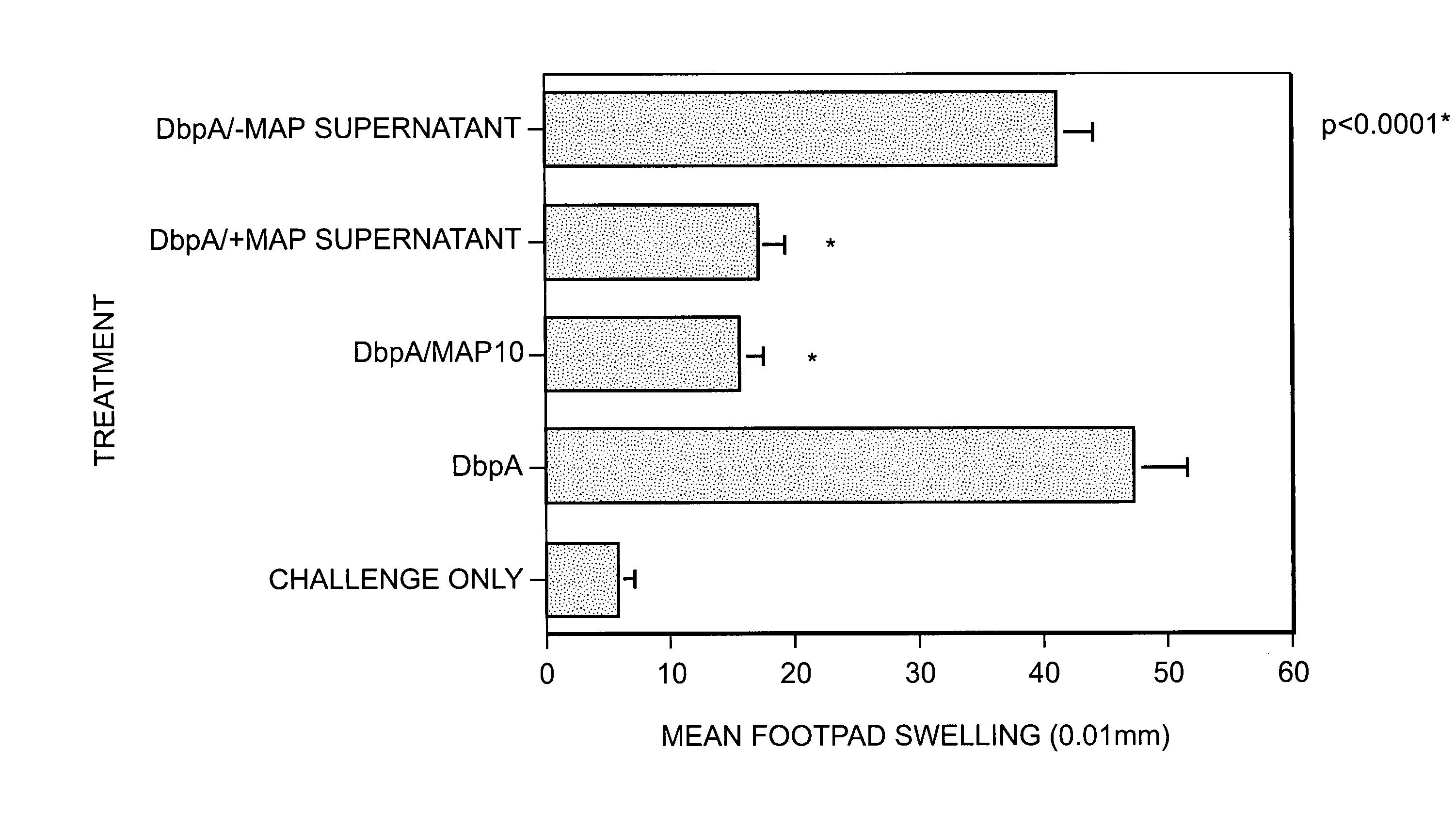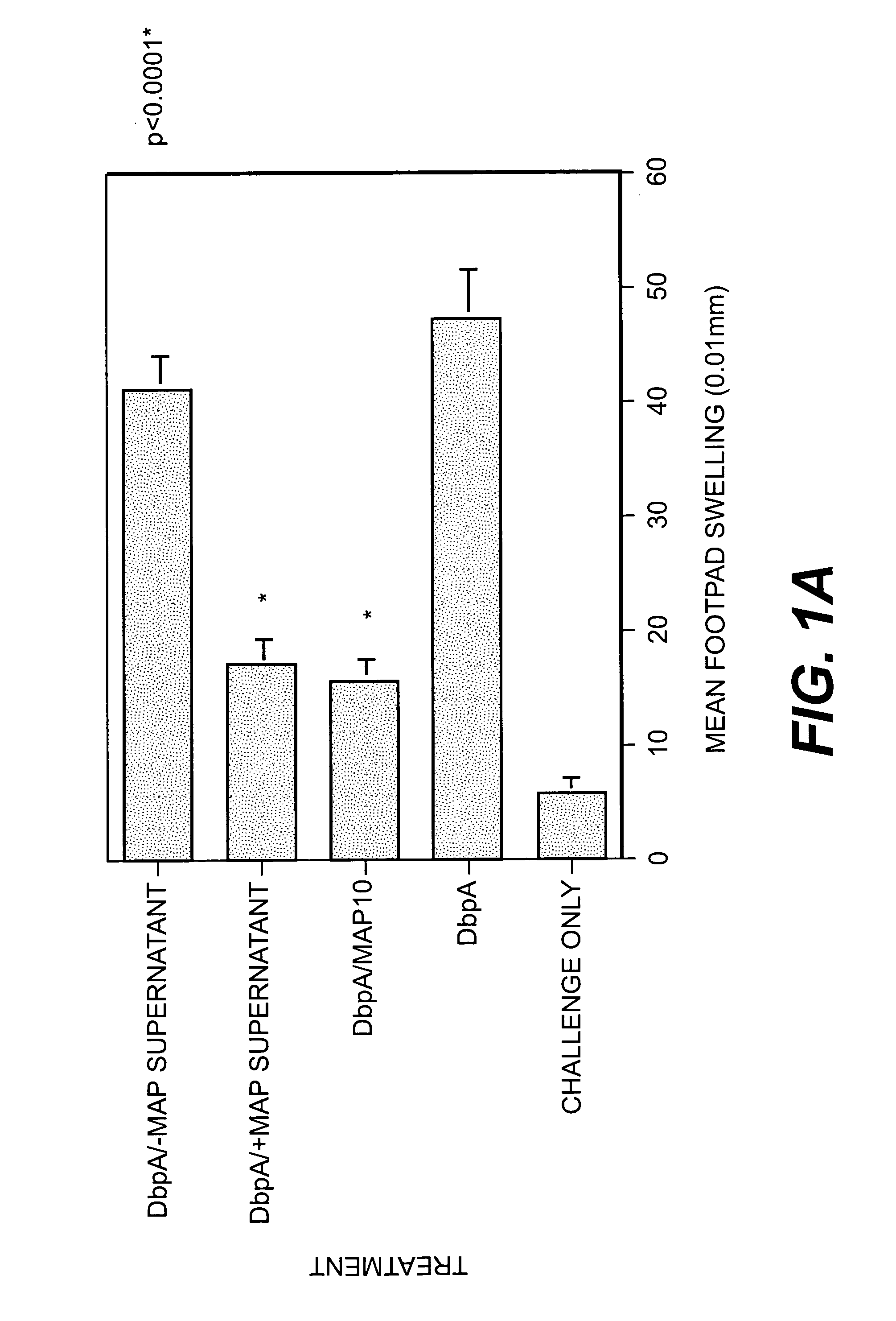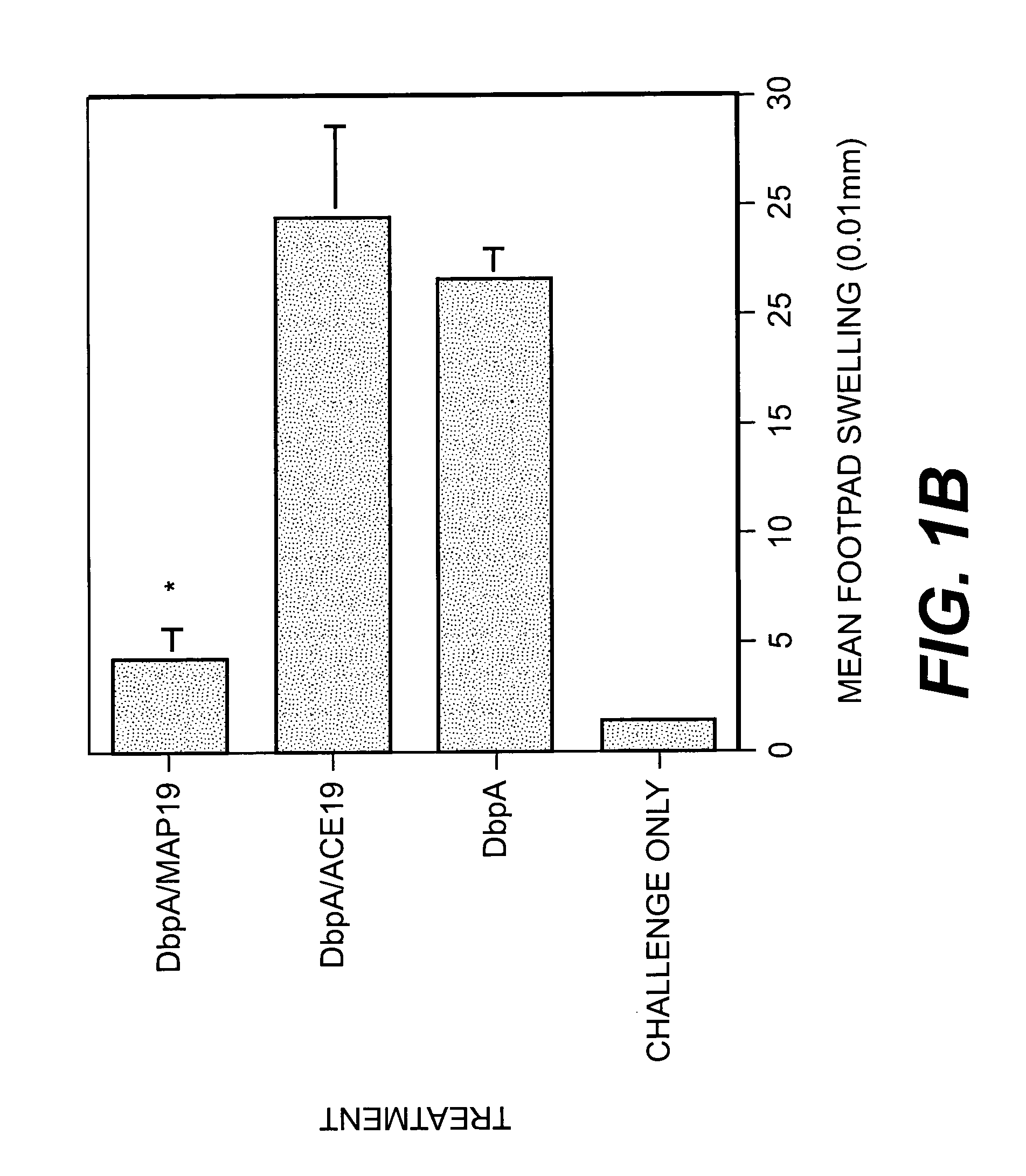Method of preventing T cell-mediated responses by the use of the major histocompatibility complex class II analog protein (map protein) from Staphylococcus aureus
- Summary
- Abstract
- Description
- Claims
- Application Information
AI Technical Summary
Benefits of technology
Problems solved by technology
Method used
Image
Examples
example 1
[0041]Overview
[0042]Staphylococcus aureus (SA) expresses a 72-kDa protein with the capacity to bind to a variety of extracellular matrix components (ECM), suggesting that at least one role for this protein involves adherence and colonization of host tissues. Analysis of Map, however, also revealed homologies to a segment of the peptide-binding groove of the b chain of the major histocompatability class (MHC) II mammalian proteins. Map-deficient SA (Map− SA) were generated to examine Map's role in the infection process. Map−SA-infected mice presented with significantly reduced levels of arthritis, osteomylitis, and abscess formation compared to Map+SA-infected control animals. Furthermore, Map−SA-infected mice challenged with Map+SA were significantly protected against SA-induced pathology compared to mice infected and challenged with Map+. Native and recombinant forms of Map were tested for their ability to interfere with T cell response in vivo and in vitro. T cells or mice treated...
example 2
Tests of Map, Map10 and Map19
Materials and Methods
Mice
[0079]Specific pathogen-free (MTV−) BALB / c were purchased from Harlan Sprague Dawley, Indianapolis, Ind. The animals were maintained in facilities approved by the American Association for Accreditation of Laboratory Animal Care in accordance with current regulations and standards of the United States Department of Agriculture, Department of Health and Human Services, and National Institutes of Health. All animal procedures were approved by the Institutional Animal Care and Use Committee. Female mice were 8–10 weeks old at the start of each experiment.
Quantitation of S. aureus and Intravenous Injections
Map+SA and Map− SA (strain Newman or 8325) were grown overnight in Lennox broth (LB) (Difco, Detroit, Mich.) media at 37° C. with shaking. 50 μl of this culture was used to inoculate 10 ml of fresh LB in a 250 ml Erlenmeyer flask. The new cultures were grown as above until the optical density reached 0.5 at 600 nm with a 1-cm quart...
PUM
| Property | Measurement | Unit |
|---|---|---|
| Immunogenicity | aaaaa | aaaaa |
Abstract
Description
Claims
Application Information
 Login to View More
Login to View More - R&D
- Intellectual Property
- Life Sciences
- Materials
- Tech Scout
- Unparalleled Data Quality
- Higher Quality Content
- 60% Fewer Hallucinations
Browse by: Latest US Patents, China's latest patents, Technical Efficacy Thesaurus, Application Domain, Technology Topic, Popular Technical Reports.
© 2025 PatSnap. All rights reserved.Legal|Privacy policy|Modern Slavery Act Transparency Statement|Sitemap|About US| Contact US: help@patsnap.com



